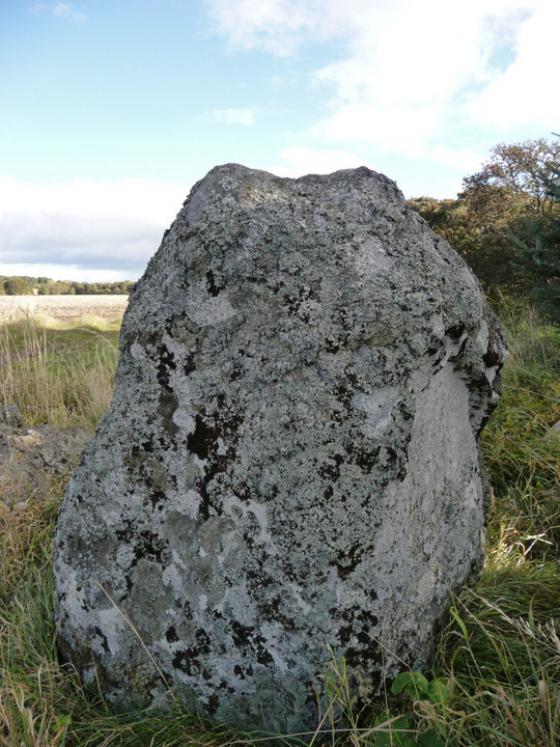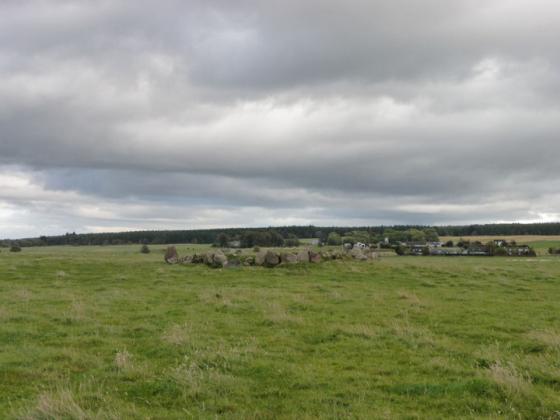As soon as we’re under the trees the incredible atmosphere of this place hits home. Under a canopy of leaves turning slowly from green to autumn shades, the NE cairn is the nearest to us, surrounded by an impressive ring of upright stones. It’s almost too much for the brain to compute, the size of the cairn, the exquisite choice of stones for the circle. And then the eye relays the information that there’s two more of the damn things, right THERE. I’ll be honest – nothing I’d read about the site, no photos I’d seen, really prepared me for its raw, in the flesh, splendour. And it’s all ours for the moment, no coachloads of disinterested gawpers, just us in this magical glade. By now I’m wearing the stupidest grin ever.
Walking around the NE cairn reveals the deliberate grading of the stones, up to a slender monster all of 9 feet. Both of us walk around the circle for a while, neither somehow quite ready for the cairn itself yet. During our circuits, we admire the amazing cup-marked kerb stone. What a beautiful thing. At length we head into the chamber. It’s a little difficult to imagine this open passage as a low “creep”, in truth. But the stonework inside the chamber is wonderful and the feeling of seclusion, already heightened in the quiet of the glade, is complete in here. When we re-emerge we spend another 10 minutes or so re-circling the circle. I can’t get enough of this.
The central cairn is very different. The mound is lower and there is no passage into it (and apparently never was). Although its surrounding circle is similar to that around the NE cairn, it is connected to the cairn by a series of low rubble “spokes”, apparently at random but no doubt anything but. The effect is striking, if typically unfathomable, at least to me.
Tucked away on the edge of the site near the central cairn is a lovely kerb or ring cairn, consisting of an open ring of small boulders, one decorated with cup-marks and a cup and ring. I like this little ring very much, although it feels almost like a whimsy in the company of the three main cairns and circles.
The first thing that attracts my attention at the SW cairn is the rather unusual “double” stone in the surrounding circle. It looks like a single stone that has been split vertically and then prised apart, leaving an enigmatic upright V shape. There is so much to ponder over at this complex. The cairn itself is very fine, sitting on an even wider low mound. As well as the “double” stone, the uprights in the surrounding circle match the careful choice of those around the other two cairns. As with the NE cairn, we spend a while circling, taking in the stone over the road, sadly divorced from its family, and the couple built into the fence/wall.
While we are here a couple on bikes arrive at the other end of the site, the only people we’ve seen so far. We head into the interior of the SW cairn, noting both the lovely cup-marked stone just inside the chamber and another stone built into the walling that appears to have a single cup-mark (although I’m not aware of reading about that). I could sit and look at the different stone textures for hours, but at length we decide to head back around the site again before checking out some of the neighbouring monuments. Apart from the cyclists, we’ve had the whole place to ourselves for over an hour.
I can’t put into words how deeply this place has impressed me. I hope we can come back again, although perhaps the perfect visit won’t be easily repeated.





















































































































